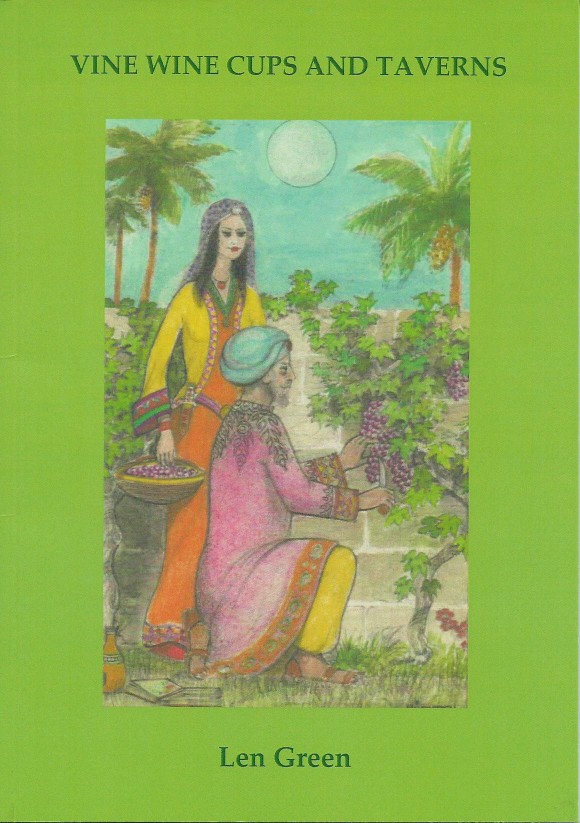“Dear reader, do you have a taste for wine?
Do you require a specialist’s guideline
To lead you onto esoteric paths
Some exuberant vintner may assign?”
 Len Green, from Australia, has just issued another book with selections from various translations of Khayyám’s verses, dedicated almost entirely to Omar’s wine quatrains and everything one needs to enjoy a good bottle: the vine, the grape, the juice, the draught, Saki, cup and cupbearers, bowls and bottles, jugs and jars, flasks and flagons, the rose and the tulip and of course your loved one.
Len Green, from Australia, has just issued another book with selections from various translations of Khayyám’s verses, dedicated almost entirely to Omar’s wine quatrains and everything one needs to enjoy a good bottle: the vine, the grape, the juice, the draught, Saki, cup and cupbearers, bowls and bottles, jugs and jars, flasks and flagons, the rose and the tulip and of course your loved one.
The book Vine Wine Cups and Taverns – a Taste for Wine was published to raise funds for charity purposes.
It is available post free at a cost of AUD$12 in Australia and AUD$16 worldwide. Payment can be made by cash, cheque or money order payable to L. Green, and sent C/O Robert Green PO Box 1151 Darlinghurst NSW 1300 Australia, OR via PayPal: www.paypal.com.au. Select “pay money”, and insert email address: lbzgreen@iprimus.com.au. Please email Len Green at the same address to advise.
 Though drinking alcohol is forbidden in Islam, in classical Persian literature wine was a common subject for most authors and poets. The debate as a popular genre was often used to let forbidden objects or ideas, in this case the wine, present the pro’s and con’s and argue about their position in an Islamic society. A very popular theme was the debate between wine and a rose. In this highly interesting article, the author discusses a treatise by the thirteenth century author Muhammad Zangī Bukhārī Gul u mul (“The Rose and the Wine”).
Though drinking alcohol is forbidden in Islam, in classical Persian literature wine was a common subject for most authors and poets. The debate as a popular genre was often used to let forbidden objects or ideas, in this case the wine, present the pro’s and con’s and argue about their position in an Islamic society. A very popular theme was the debate between wine and a rose. In this highly interesting article, the author discusses a treatise by the thirteenth century author Muhammad Zangī Bukhārī Gul u mul (“The Rose and the Wine”).